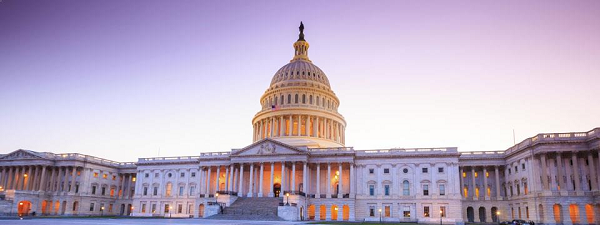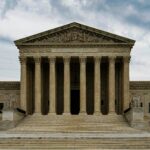Part of the Diversity and Inclusion Blog Post Series
Black History Month, occurring in the U.S. annually in February, highlights and celebrates the achievements of African Americans and recognizes their central role in U.S. history. Since 1976, every U.S. President has officially designated February as Black History Month.
************************************************************************************
 I am a proud member of the Class of 1996 of Thurgood Marshall School of Law at Texas Southern University, one of the largest historically black universities in the United States. Historically Black Colleges and Universities, referred to as HBCUs, are institutions of higher education created prior to the Civil Rights Act of 1964 with the intention to primarily serve the African American community.
I am a proud member of the Class of 1996 of Thurgood Marshall School of Law at Texas Southern University, one of the largest historically black universities in the United States. Historically Black Colleges and Universities, referred to as HBCUs, are institutions of higher education created prior to the Civil Rights Act of 1964 with the intention to primarily serve the African American community.
In 1946, Heman Marion Sweatt, an African American mail carrier in Houston, applied to attend the University of Texas Law School where Theophilus Shickel Painter was the university president. Mr. Painter admitted that Mr. Sweatt had met all qualifications for admission to the law school, but for the fact that he was black.
Mr. Sweatt filed a Writ of Mandamus to compel admission to the University of Texas Law School. At that time, there were no law schools in the state of Texas where black students were permitted to enroll. In this matter, the Texas trial judge continued the case which gave the state of Texas time to create a “separate but equal” university and law school to surround it. This school, created in 1947, would later evolve into Texas Southern University in 1951 and the Thurgood Marshall School of Law, officially named so in 1978.
Initially housed in Austin, Texas, in a basement, the school did not provide an equal education to black students as would have been offered were they students at the University of Texas. Mr. Sweatt refused to enroll at the newer university, and filed suit against Painter. Thurgood Marshall, then the Chief Counsel for the NAACP, represented Mr. Sweatt.
 Thurgood Marshall built his case around the inequities of a separate education at the university offered to Mr. Sweatt — where everything from the square footage of the classrooms, size of the library, availability of books and materials, and number of professors was much less than at the University of Texas. Further, Mr. Sweatt would be learning in isolation. Sweatt’s case at the U.S. Supreme Court prevailed in Sweatt v Painter, 339 U.S. 629 (1950) when The Court ruled unanimously that pursuant to the Equal Protection Clause, Mr. Sweatt must be admitted to the University of Texas.
Thurgood Marshall built his case around the inequities of a separate education at the university offered to Mr. Sweatt — where everything from the square footage of the classrooms, size of the library, availability of books and materials, and number of professors was much less than at the University of Texas. Further, Mr. Sweatt would be learning in isolation. Sweatt’s case at the U.S. Supreme Court prevailed in Sweatt v Painter, 339 U.S. 629 (1950) when The Court ruled unanimously that pursuant to the Equal Protection Clause, Mr. Sweatt must be admitted to the University of Texas.
Mr. Sweatt was admitted to the UT Law School, which paved the way for black students to be admitted into law and other graduate programs. While Sweatt v Painter did not go as far as it should have, it led the way a few years later for Brown v Board of Education of Topeka, 347 U.S. 483 (1954) (also argued by Thurgood Marshall) that held that separate but equal was unconstitutional and overruled one of the worst U.S. Supreme Court decisions in history, Plessy v Ferguson, 163 U.S. 537 (1896).
It is important to note that Thurgood Marshall School of Law at Texas Southern University did not take the name of Thurgood Marshall until 1978, when he agreed that his name could be added to the school in an official naming ceremony that he participated in. The initial hesitation was because the school was originally born in controversy under the since-overruled separate but equal doctrine.
 By the time I started law school in 1993, the institution had been relocated from that basement in Austin to Houston, Texas. The then- and continued present-day mission of the law school is built upon expanding opportunities in the legal profession for the underserved and to prepare a diverse group of students for leadership roles in the legal profession, business and government. The school’s mission supports equity and is a great equalizer for those who attend.
By the time I started law school in 1993, the institution had been relocated from that basement in Austin to Houston, Texas. The then- and continued present-day mission of the law school is built upon expanding opportunities in the legal profession for the underserved and to prepare a diverse group of students for leadership roles in the legal profession, business and government. The school’s mission supports equity and is a great equalizer for those who attend.
Personally, I felt it was an amazing place to attend law school. It prepared me for the real world and a great and varied career in immigration law. I worked for a solo practitioner in Houston and then became a partner in a long-established boutique immigration law firm in Miami with a prior AILA National President, Michael Weiss, and now I am a shareholder in a large national law firm. I have also had the honor of serving as the president of AILA South Florida, a nearly-1,000 member large chapter of AILA.
I credit my success to the alumni network of Thurgood Marshall School of Law, the environment, the support, the mentors I met there and still turn to, and the lifelong friendships I have developed with classmates. I will be forever grateful for the opportunities and happiness this has allowed me.
 The law school is committed to civil rights, social justice and human rights. It was at this HBCU that I first stepped into an immigration law class. I enjoyed it so much, it led me to enroll the next semester in a more advanced seminar style class led by an immigration judge, and which further sparked my interest in the field of immigration law, not something I had heard of prior to law school or even considered.
The law school is committed to civil rights, social justice and human rights. It was at this HBCU that I first stepped into an immigration law class. I enjoyed it so much, it led me to enroll the next semester in a more advanced seminar style class led by an immigration judge, and which further sparked my interest in the field of immigration law, not something I had heard of prior to law school or even considered.
I was guided to my career path in immigration law through my education at a HBCU, an institution committed to teaching immigration law. I should note, I was a law student over 25 years ago, at a time when immigration law was not on the radar of many law schools and lawyers. An HBCU helped me get a job offer before graduation with a reputable immigration law firm in Houston. I competed against students from traditional law schools (in that they were not HBCUs) and was chosen out of 60 applicants for the position.
I believe my experience at one of the most diverse law schools in the nation, one that opens their doors to all races, gave me a different perspective and is an experience I could not have gotten anywhere else. It prepared me for the real world, to appreciate and accept different viewpoints and also to have empathy and understand some of the harsher realities of life. The school was not in a wealthy area but rather in the Third Ward of Houston, where our law school parking lot ran alongside the edge of Jack Yates High School, the school George Floyd attended close to my years in law school.
 My experience at a HBCU specifically taught a certain toughness, where I had an excellent education and graduated very prepared for the real world. We were taught life lessons there which I don’t believe are taught at most law schools. We were taught as graduates of a HBCU we would need to be extra prepared and work harder to overcome stereotypes; that professionalism is critical as well as how we carried ourselves, down to the details of our attire and appearance. (Members of AILA South Florida if anything, know that I am a strict dress code enforcer for events, especially congressional- this is where it comes from.)
My experience at a HBCU specifically taught a certain toughness, where I had an excellent education and graduated very prepared for the real world. We were taught life lessons there which I don’t believe are taught at most law schools. We were taught as graduates of a HBCU we would need to be extra prepared and work harder to overcome stereotypes; that professionalism is critical as well as how we carried ourselves, down to the details of our attire and appearance. (Members of AILA South Florida if anything, know that I am a strict dress code enforcer for events, especially congressional- this is where it comes from.)
I am proud that now my law school, has the very first LLM program in immigration law in the U.S. promoting black students and other minorities for excellence in our field which in turn will support the immigrant community. I hope we will see more programs like this in the future, to guide more Black, Indigenous, and People of Color (BIPOC) attorneys to our field of immigration law, and hope to see more graduates of HBCUs involved in AILA leadership.







